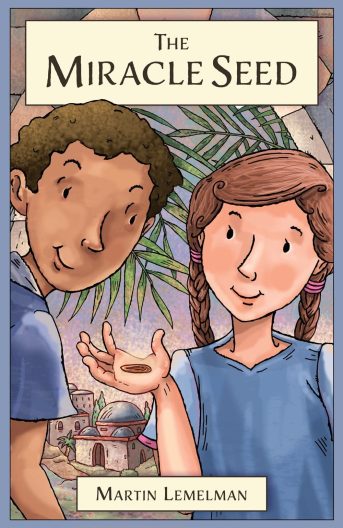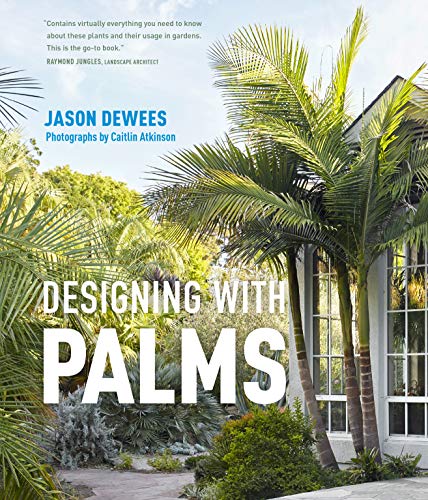 Martin Lemelman is the author/illustrator of “The Miracle Seed” and uses a style similar to comic books to tell his story. The Judean date palm, a cultivar of Phoenix dactylifera, was an important tree for its sweet fruit, medicinal properties, and cultural significance to the Jewish people. Following the bloody put-down of Jewish revolt between 66-74 CE, many of the groves were destroyed by the Romans. In the centuries that followed, a combination of factors led to the tree’s extinction.
Martin Lemelman is the author/illustrator of “The Miracle Seed” and uses a style similar to comic books to tell his story. The Judean date palm, a cultivar of Phoenix dactylifera, was an important tree for its sweet fruit, medicinal properties, and cultural significance to the Jewish people. Following the bloody put-down of Jewish revolt between 66-74 CE, many of the groves were destroyed by the Romans. In the centuries that followed, a combination of factors led to the tree’s extinction.
In 1963, archaeological excavations in last, first-century Jewish holdout at Masada found a jar with six seeds of the Judean date palms. “The Miracle Seed” tells the story of the two women scientists who very carefully coaxed some of these seeds to germinate 2,000 years after they were harvested.
The first planting was on Tu B’Shvat, the Jewish New Year of Trees in 2005. It wasn’t until six years later that one successful seedling was large enough to flower, revealing it was a male plant of this dioecious species. In the meantime, a few other seeds were found at other archaeological sites.
From these seeds, the first female Judea date palm flowered in 2020. Later that year, with pollen from the original plant (appropriately named “Methuselah”), the first fruit in two millennia was harvested and an extinct plant was brought back to life!
Excerpted from Brian Thompson’s article in the Summer 2023 issue of the Arboretum Bulletin
What are the cultural requirements for Zamioculcas?
Zamioculcas is in the plant family Araceae, and its common name is the Aroid palm. According to the Sunset Western Garden Book (2007), this tropical African perennial which resembles a cycad or a palm will grow slowly to 4-5 feet high by 3-4 feet wide. Grown outdoors, it prefers partial to full shade, but indoors you should provide bright filtered light. It should be placed on a tray of moistened pebbles, and misted occasionally. During active growth, keep the soil evenly moist, and give it balanced fertilizer once a month. During the fall and winter months, do not fertilize, and only water when the top inch of soil becomes dry. In summer, the plant may be moved outside to a shady spot. All parts of this plant are poisonous.
You can find discussion among growers of Zamioculcas zamiifolia (sometimes called “the ZZ plant”) on the University of British Columbia Botanical Garden Forum.
What could cause sinus allergy symptoms every December?
According to Thomas Ogren’s book, Allergy Free Gardening , the genera Alnus, Baccharis, Casuarina, Festuca, Pennisetum, Juglans, Poa, Tamarix, Taxodium, Thujopsis, Xylosma, Zelkova, and palm trees all produce pollen during December.
(Source: Ogren, T.L., Allergy-Free Gardening: The revolutionary guide to healthy landscaping , 2000, pp.262-265)
Also check out Allergy Free Gardening website. There are a number of articles on low-allergy gardening listed.
 “Designing with Palms” by Jason Dewees is by a San Francisco based author, who profiles garden motifs evoked by palms across the country. For instance, Chamaerops humilis suggests a Mediterranean garrigue, an ecosystem with low shrubs, including rosemary and lavender, like one might find in a Seattle landscape.
“Designing with Palms” by Jason Dewees is by a San Francisco based author, who profiles garden motifs evoked by palms across the country. For instance, Chamaerops humilis suggests a Mediterranean garrigue, an ecosystem with low shrubs, including rosemary and lavender, like one might find in a Seattle landscape.
While the author’s examples do not include a garden in the Pacific Northwest, those in temperate areas do give guidance for those who wish to try these iconic plants in our climate. I found the Riverbanks Botanical Garden in Columbia, South Carolina especially instructive, perhaps because Jenks Farmer, a Master of Science graduate from the Center for Urban Horticulture in 1993, had a major role in its design.
Dewees is well aware of the practical side of a garden with palms. His copious species notes include hardiness ratings – fined tuned to the exact minimum temperature – and many cultural and aesthetic tips. On caring for Trachycarpus fortunei: “Give them an updated look by pruning off the gorilla-hairy leafbases to reveal their smooth, ringed trunks…or leave them natural and tuck epiphytes such as bromeliads, orchids, and ferns among the fibrous leafbases.”
Published in Garden Notes: Northwest Horticultural Society, Spring 2019
“The Pacific Northwest Palm & Exotic Plant Society (PNWPEPS) is a non-profit chapter of the International Palm Society. They are dedicated to the successful cultivation of palms and other exotic plants outdoors in British Columbia, Washington and Oregon.”
While native plants are all the rage these days some gardeners desire the look of a desert oasis. The members of the Pacific Northwest Palm & Exotic Plant Society plant hardy palms, New Zealand Flax and cold-tolerant bananas. The society holds regular meetings, plus garden tours, plant sales and social events. They also publish the quarterly newsletter The Hardy Palm with articles on culture, design and member profiles. While most members live in British Columbia they are looking to gain new members in Oregon and Washington. Membership costs $40.00 per year. To join contact Frank Hunaus at 604-271-9524 or go to www.hardypalm.com.
 Martin Lemelman is the author/illustrator of “The Miracle Seed” and uses a style similar to comic books to tell his story. The Judean date palm, a cultivar of Phoenix dactylifera, was an important tree for its sweet fruit, medicinal properties, and cultural significance to the Jewish people. Following the bloody put-down of Jewish revolt between 66-74 CE, many of the groves were destroyed by the Romans. In the centuries that followed, a combination of factors led to the tree’s extinction.
Martin Lemelman is the author/illustrator of “The Miracle Seed” and uses a style similar to comic books to tell his story. The Judean date palm, a cultivar of Phoenix dactylifera, was an important tree for its sweet fruit, medicinal properties, and cultural significance to the Jewish people. Following the bloody put-down of Jewish revolt between 66-74 CE, many of the groves were destroyed by the Romans. In the centuries that followed, a combination of factors led to the tree’s extinction. “Designing with Palms” by Jason Dewees is by a San Francisco based author, who profiles garden motifs evoked by palms across the country. For instance, Chamaerops humilis suggests a Mediterranean garrigue, an ecosystem with low shrubs, including rosemary and lavender, like one might find in a Seattle landscape.
“Designing with Palms” by Jason Dewees is by a San Francisco based author, who profiles garden motifs evoked by palms across the country. For instance, Chamaerops humilis suggests a Mediterranean garrigue, an ecosystem with low shrubs, including rosemary and lavender, like one might find in a Seattle landscape.